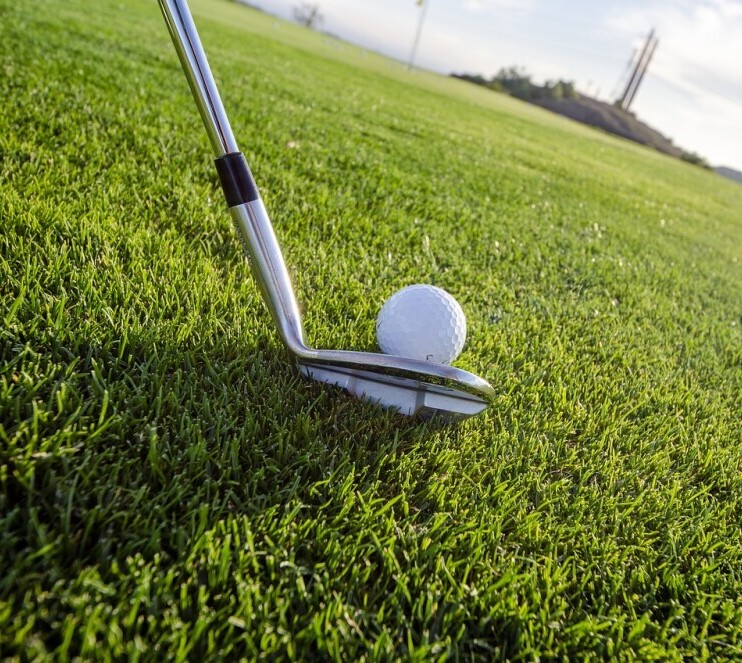How To Develop A Perfect Flop Shot


Fore! Quick note: a few links here are affiliate links. If you snag gear through them, I earn a small commission — no extra strokes added to your game.
A flop shot is one of those crafty golf maneuvers that can elevate your golfing game, especially when you’re stuck with a tough spot near the green. Imagine needing to send the ball over an obstacle, like a bunker, and landing it softly close to the hole. That’s where a flop shot comes in handy. The golf viking is here to take you on another golf journey, come along as we delve into the flop shot.
The origins of the flop shot trace back to creative players who needed a game-changing skill to tackle challenging terrains. Often attributed to golf legends, the shot evolved as an art form within the sport and turned into a must-have skill for pros on the tour. In todays game every golfer can utilize this shot to get them out of a jam on the golf course.
What sets a flop shot apart from other strokes, like chips or pitches, is its high trajectory and soft landing. While both chips and pitches require precision, they differ in flight and roll dynamics on landing. The unique character of a flop shot lies in how it allows the ball to land gently with minimal roll, making it perfect for tricky short-range approaches.
Comparing this to other shots gives you a clear picture of why so many players find the flop vital. It’s unlike a standard chip that needs more roll or a pitch where managing distance can be trickier. Mastering the flop shot enriches your arsenal with a strategic play that you’ll likely appreciate in tight spots. So why is the flop shot important?
The flop shot is one of golf’s most delicate plays, requiring precise swing mechanics. Brush up on your fundamentals with Mastering the Golf Swing to build a strong foundation.

The Significance of the Flop Shot in Golf
A flop shot isn’t just a cool trick—it can be a game-saver. Picture yourself standing in the rough terrain, a bunker between you and the flagstick. The flop shot lets you gracefully lob the ball over obstacles, landing softly on the green. This can help put you out of harms way and into a good putting situation.
Mastering the flop shot unlocks strategic advantages. It’s like having a secret weapon when dealing with tight landing areas or when you need the ball to stop quickly upon arrival. It’s not just about flair; it’s about adding practical tools to enhance your arsenal on the course. And after reading this, you can add the flop slot to your repertoire as well.
This shot plays a pivotal role by offering solutions to tricky situations that could otherwise add strokes to your score. By embracing this shot, you’re equipped to handle these challenges with confidence. This allows you to feel comfortable in any situation you may find yourself.
In the competitive world of golf, professional players often owe their victorious moments to the skillful execution of flop shots. Notable tournaments have witnessed spectacular flop shots saving the day, reinforcing their importance in high-stakes scenarios. The flop shot can truly save you when you thought you might be out of options.
Whether it’s watching a pro pull off a legendary flop in a championship or hearing success stories from club golfers, the flop shot is often a game-changer. Adopting this skill can transform those nerve-wracking greenside positions into scoring opportunities. Let’s talk about how getting a perfect flop shot can actually lower your scores on the scorecard.
The right wedge is crucial for pulling off a flop shot. Learn how loft impacts performance in Best High Loft Golf Clubs.

Boosting Your Golf Score with Flop Shots
When you’re aiming to shave strokes off your golfing score, the flop shot is your ace in the hole. It’s a go-to move when you find yourself facing towering hazards, where a regular shot wouldn’t cut it. This shot helps by gracefully bypassing obstacles and ensuring a smooth landing near the pin.
Using a flop shot strategically can transform the trickiest challenges into opportunities to get closer to that coveted low score. It’s about deftly navigating those pesky bunkers and firm greens with just the right touch. You can save yourself from tricky situations and possibly even score a par.
Take a look at how this move enhances scores: it’s not just about luck. Players can consistently improve stroke counts by efficiently handling those hair-raising short-range shots that demand finesse. It’s no wonder that precision with a flop shot signifies advancement in your golfing journey.
Golfers who swear by this tactic will tell you about times they’ve turned looming bogeys into satisfying pars or even birdies, thanks to a well-placed flop. Countless testimonials praise how essential mastering this skill is in lowering scores and increasing confidence on the course.
Getting comfortable with flop shots means less stress over tough spots and more occasions to shine. It opens up new possibilities for scoring and takes your game to a higher level. Alright so we get it, the flop shot can save you some strokes. So how do we do it?
Not all wedges are created equal when it comes to generating spin. See Best Golf Clubs for Backspin to find tools that give your flop shots stopping power.

Mastering the Art: Executing a Perfect Flop Shot
A successful flop shot requires finesse and a keen sense of feel. It starts with choosing the right club, usually a highly lofted wedge, which helps in getting that high-arching flight. This is the start of properly executing a flop shot. A fairway wood isn’t going to get the job done, so make sure it’s a wedge with a high loft so you’ll be able to pop that ball in the air.
Position the ball slightly forward in your stance. This setup promotes the upward strike needed for a higher trajectory. Keep your weight balanced, aiming for a gentle swing rather than a forceful hack. Your stance and swing will prove vital to a good flop shot.
Focus on opening the clubface. This key step ensures the ball has the best chance of popping up instead of skimming along the ground.
A smooth, committed swing with steady wrists is crucial. Make sure your follow-through aligns with where you want the ball to land, ensuring a softer finish and less bounce upon hitting the green.
Avoid common pitfalls, like the urge to overswing. It’s easy to think more power will help, but it often leads to misfires. Trust the loft of your club and let it do the work for you, guiding the ball steadily. The club is designed to help get the ball in the air, so don’t try to force the ball up simply with power.
Your equipment plays a role too. Ensuring your wedges have enough grip and proper bounce helps when executing a flop, especially on varied terrains. Having the right club and using it the correct way is the only way to execute a perfect flop shot.
The practice is invaluable in nailing this shot. Consistent practice builds confidence and sharpens your ability to read different situations where a flop shot can be applied effectively. Knowing how to perform this shot effectively will save you from troubled situations on the course.
Flop shots demand excellent distance control to avoid overshooting the pin. Check out Best Tips for Controlling Distance in Chip Shots for guidance on dialing in touch.

Practical Application and Mechanics of a Flop Shot
Knowing when to pull out a flop shot can be as crucial as knowing how to hit it. Typically, this shot is your go-to move when you’re close to the green with an obstacle or need the ball to land softly with minimal roll. If you need to pop the ball high in the air over an obstacle or steep terrain and with minimal roll, then the flop shot is exactly what you need.
The mechanics of this shot lie in precise body alignment. Your stance should be open with your shoulders aligned slightly left of the target. This permits an unimpeded swing along your body line, helping achieve that high, soft landing.
Weather and terrain play significant roles in the application. Windy conditions might alter the ball’s trajectory, so it’s best executed in calm weather when the conditions allow for more control. On terrains, softer surfaces can provide a more forgiving landing, complementing the flop’s delicate nature.
Consistent practice is key to mastering the fluctuating dynamics of this shot. Begin by practicing in diverse conditions to understand how different scenarios alter your execution. Regular practice builds muscle memory that adapts seamlessly to various golf course settings.
Embrace the learning curve while relying on visual cues for gauging distances and elevations. The more you practice, the easier it becomes to decide when and how to utilize a flop shot effectively in your game. I’ll see you out on the golf course, flopping away.
Short-game finesse separates good golfers from great ones. Dive into Short Game Mastery for techniques that improve your touch around the green.


